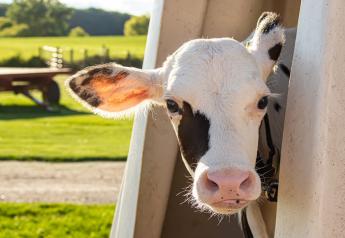6 Tips to Maximize Time on the Farm

Do you feel like your to-do list far exceeds the hours in a day? Or, do you feel you spend your entire day just putting out fires and never focusing on the important jobs on the farm? “If you do not run your day, your day will run you,” says Mary Kelly, CEO of Productive Leaders and a 20-year veteran of the Navy.
“When you take control of time and use it wisely, you free yourself up for new opportunities. Having control of your time protects you from needless stress and allows you to plan for the success you want.” These strategies help you have more control over your time and own your schedule, she says. Your goal: Be very strategic with your time.
1. CREATE A DAILY TO-DO LIST
Once you have your list, plan your entire day, Kelly says. Include the small details, such as taking 5-min. or 10-min. breaks.
“Know what you want to do and make room for interruptions,” she says. “If a critical and unplanned issue needs attention, find a way to attend to it while still doing crucial tasks.”
A clear plan for each day increases focus, adds Bob Milligan, senior consultant at Dairy Strategies.
“Uncertainty and indecision increase stress,” he says. “Developing this plan could be part of your end-of-the-day routine.”
2. USE A PRODUCTIVITY TECHNIQUE
Do you have trouble concentrating on a large project for a long time? Use a version of the Pomodoro Technique, Kelly suggests. This technique was invented in the 1980s and is named after the classic tomato-shaped kitchen timer. (Pomodoro is Italian for tomato).
Step 1: Set a timer for 25 min. and give one task your undivided attention for that time.
Step 2: When the timer dings, take a break and do a totally different task for 5 min.
Step 3: After your 5-min. break, spend another 25 min. working on the original task.
Step 4: Take another 5-min. break; lather, rinse, repeat!
3. CLEAR THE CLUTTER
Can you only see snippets of your desk under a pile of piles? These stacks of very important papers and other clutter can quickly expand to fill any space.
“Every week, I schedule a cleaning of the workspace,” Kelly says. “I take everything off the desk and then file it, toss it or organize it. It is easier to be productive and switch gears when my workspace is neat, clean and organized.”
4. USE TASK TIME ESTIMATES
Know which tasks are your top priority and label them your As and Bs and 1-2-3s, suggests Mark Faust, president of Echelon Management.
“You’ll know what you have to get done first; then start putting a time estimate next to each priority,” he says. “Add up the total hours of work on your list, and if it exceeds seven hours of work, then push off some items until tomorrow. Long lists slow you down.”
5. CREATE HABITS TO REACH GOALS
“Tracking your habits gives you a visual reminder of all the progress you are making, but make sure it is an attainable goal,” Kelly says.
For instance, if you need to update leases for all of your rented farms, set a daily goal to review two or three. Do this for a certain number of weeks and the job is done.
“Setting a goal that is too large is overwhelming and often leads to giving up,” she says. “Seeing your progress gives you increased energy to keep moving forward.”
6. WORK AHEAD OF DEADLINES
We tend to overestimate what we can do in the short term and underestimate what we can do in the long term. As a result, Kelly says, many people miss deadlines because they are unrealistic.
“They do not plan their work properly, they procrastinate and then they are late,” she says. “Set deadlines to avoid procrastination or the I-still-have-plenty-of-time-to-do-this attitude.”
Deadlines inspire action and improve productivity. Kelly’s advice: Assign deadlines to every goal and task. Doing this helps us work more efficiently toward the right results.







